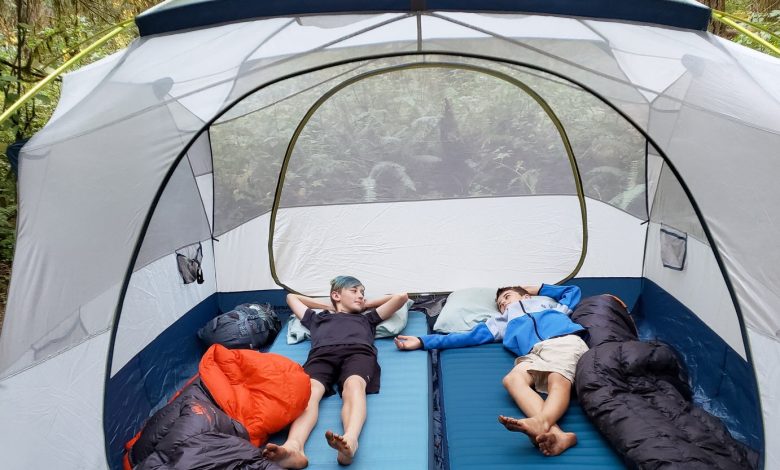How To Choose The Right Tent For Camping

Choosing a tent like Tents for school for instance depends on your preference and usage plans. Will the camping tent be used only in the summer, or in three or four seasons of the year? Will you camp above or below the forest line? For your use only or two, three or four people? Are you the luxurious style or the simple laid back? How much weight are you willing to carry? How much money do you have to spend?
Manufacturers offer almost every combination of size, weight, and model. The choice is yours, after consulting catalogs, stores, your friends, and camp neighbors. However, some factors must be taken into account when purchasing a tent. Are they:
Water-resistance – The tents are built with double or single walls, made of waterproof or breathable material. A completely enclosed unit should be well ventilated and preferably should “breathe.” If the tent is waterproof, the moisture you exhale condenses on the cool walls and runs down to form puddles on the floor. In just one night, you and your tent mates can expel enough water vapor to soak your sleeping bags.
Strength – Many tents are rated by a “relative strength factor,” the wind speed that the tent remains upright before the frame deforms. If you expect to hit wind and snow, this is an important consideration. The tent should stand upright in strong winds and snow loads without structural failure.
Weight – There is usually no choice: lightweight or more comfort and durability. Light tents are available, but the question is whether they are big and strong enough for your particular uses. Look for a lightweight tent that meets your requirements for several occupants, main area, floor size, ceiling height, equipment storage location, strength, weather, and weather conditions indicated.
A two-person tent for summer camping can be light, while a three-person tent for four-season expeditions can weigh twice as much or more and cost two or three times as much.
Shape – The trend in tent shapes have been the tunnel and igloo. These models make the most of the available space and minimize the number of piles and extenders.
Igloo-type ones do not need extenders to remain upright and can be lifted and removed easily but still need to be staked on the ground to avoid being carried by the wind. Tunnel tents with two or three arches usually need extenders to stand upright, offer efficient use of space, and have features that do not let the wind through. The traditional A (Canadian tent) design doesn’t have much usable space, but it’s simple, with an approved model.
Size – The two-seat tent is probably the most popular size and offers the most weight and camping locations flexibility. It is usually better to bring two tents for two people than one for four people for group versatility. Many two-seat tents support three people in a tight fit and are still light enough to use one person occasionally.
Some three- and four-seat tents are light enough to be carried by two people who want a lot of luxury and comfort. Large tents, especially those you can stand inside, are a big boost to group morale during an expedition or long storm. To carry, you can divide the weight among the group dividing the tent into parts.
Colors – Warm color tents like yellow, orange, and red are vibrant if you’re stuck inside and make it easier to see when you head back to camp. On the other hand, softer tones harmonize with the landscape. One unpleasant thing: the muted colors can blend so well that you’ll have trouble finding the camp.

